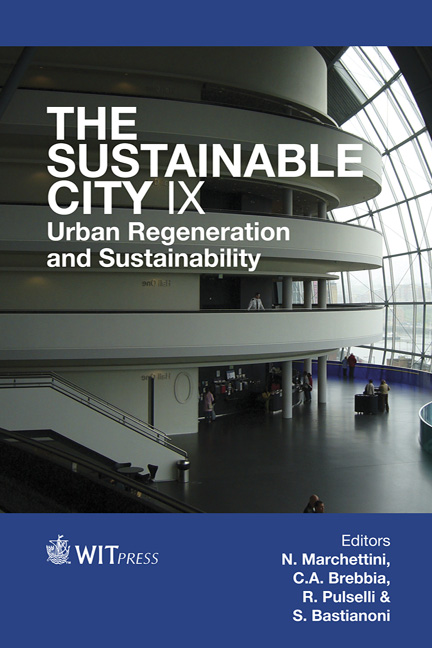Ecosystem Under Restoration: A Sustainable Future For The Cultural Landscape Of San Antonio River, Texas
Price
Free (open access)
Transaction
Volume
191
Pages
13
Page Range
1139 - 1151
Published
2014
Size
701 kb
Paper DOI
10.2495/SC140962
Copyright
WIT Press
Author(s)
A. Lombardi
Abstract
The city of San Antonio is one of the most relevant historic cities in the US, world-wide renown as the ‘Venice of Texas’, characterized by its river and famous Riverwalk.
The city was founded by the Spaniards as a presidio in the first quarter of eighteen century in a strategic location between two water features: the Rio San Antonio and the Arroyo de San Pedro. During the same period, were built along the river five Spanish-colonial missions, which are today, together with their ‘cultural landscape’, on the US tentative list to be advanced as a possible UNESCO World Heritage Site.
The famed Riverwalk, created in the 30s after the construction of the Great Bend, is a unique experience of a river park within the city, but it has a limited extension, related only to the downtown area.
After 1941 flood, the 1954 Corps of Engineers channelization project drastically transformed the river landscape outside the city center: river channelization effectively protected the area from destructive floods, however, changed the river into a drainage channel. Without taking in consideration Leopold’s ‘land ethic’, it interrupted the ancestral and laborious relationship between land and water.
This study analyzes 2001–2014 San Antonio River Improvement Project (SARIP) and subsequently focuses on the undertaken strategies for the ‘Mission Reach Ecosystem Restoration Project’. SARIP enhances 13 miles of the river both north and south of downtown, the latter recovers an eight mile stretch of the river on the southern area of the city. It includes several steps assessed in this research study:
• flood management and reconfiguration of the river channel, criteria and limits;
• improvement of the river’s ecology including aquatic habitat;
• restoration of the flora, reestablishing hundreds of acres of native grasses and wildflowers and reintroducing native trees and shrubs.
An ecosystem restoration changes the relationship between man and land: it will enhance inhabitants’ circulation along the river beyond the Riverwalk, it will recreates the historical connections, interrupted for more than 50 years, to the Missions and, will re-link river banks and its surrounding land.
The culmination of these steps will result in an environmental sustainable water source, giving new meaning and new role to the river for future generations to come.
Keywords
San Antonio River, cultural landscape, ecosystem restoration, Franciscan Missions





